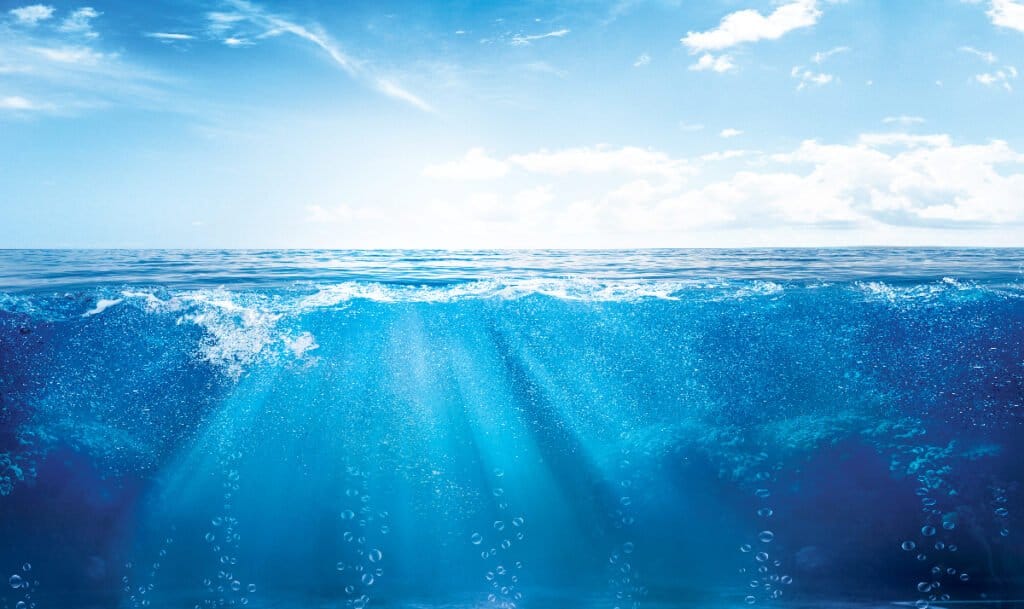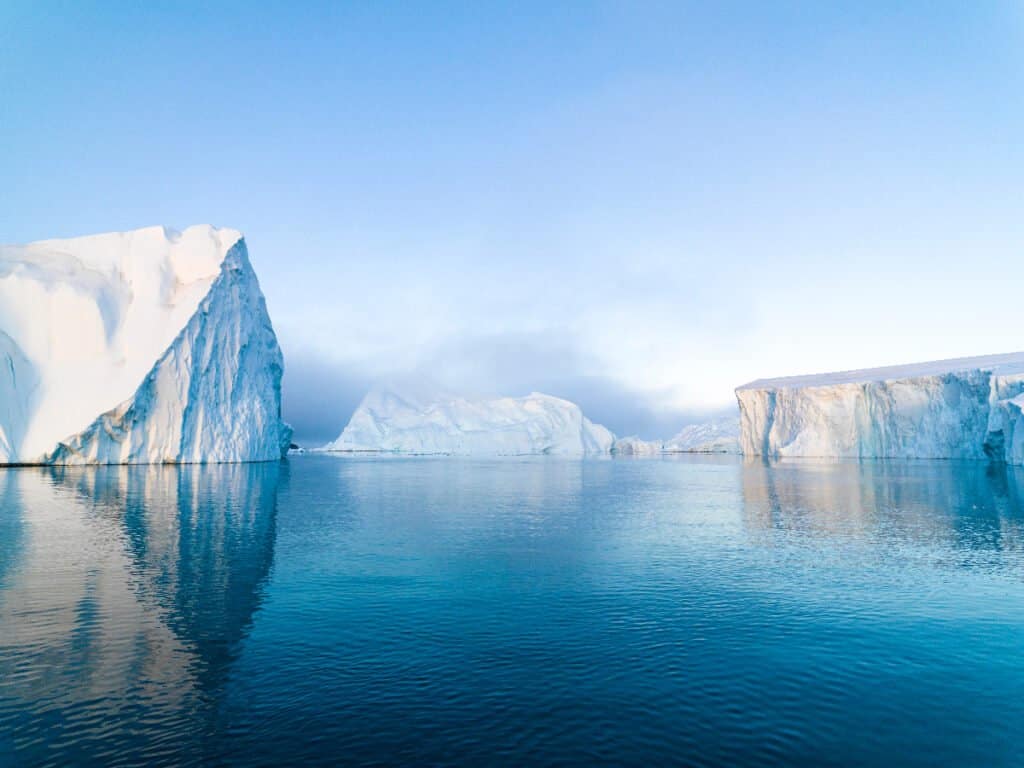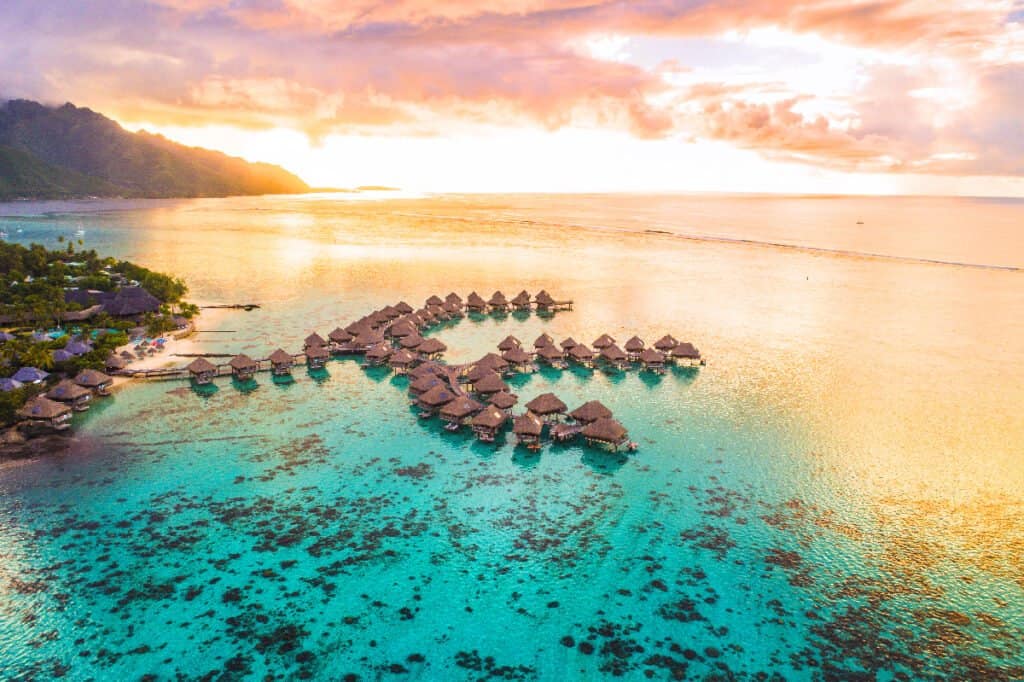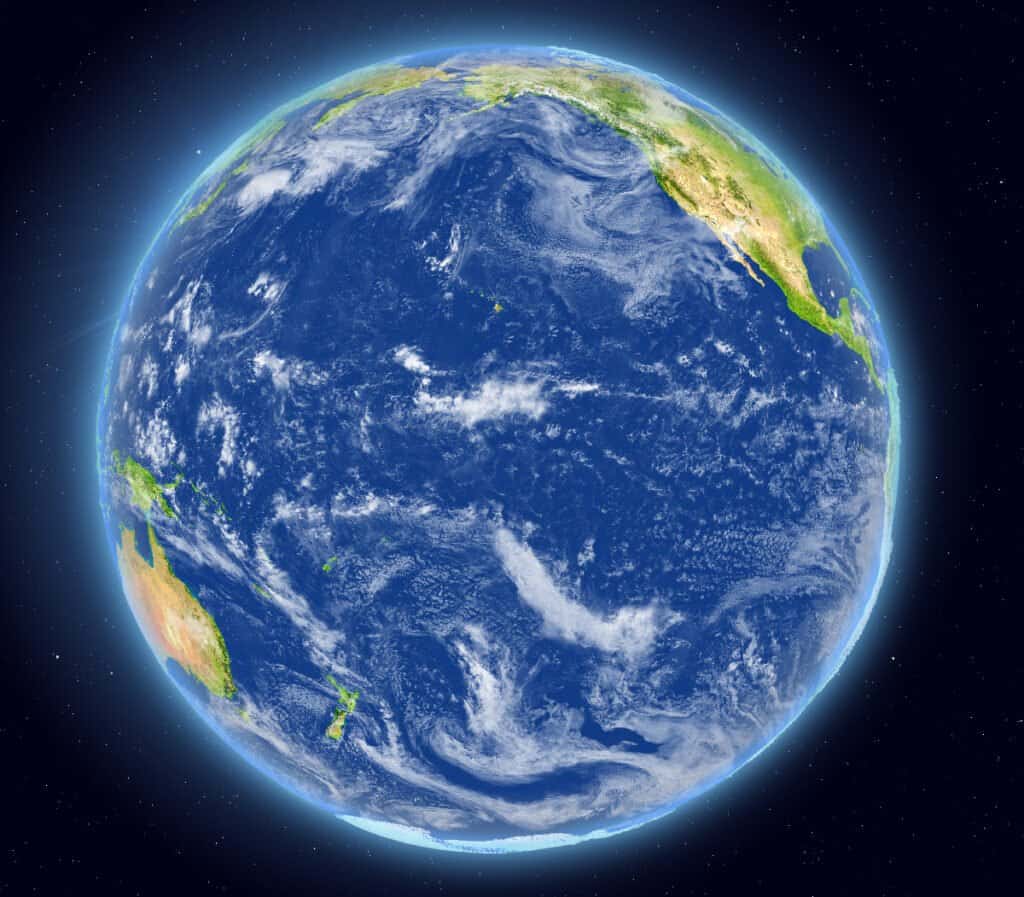Oceans are the lifeblood of the planet in many ways. These massive bodies of water have been used for transport, finding food, recreation, war, and many other things that do not include drinking saltwater. These bodies of water take up almost 71% of the planet’s surface, and they are integral to the planet’s sustained being. It’s only fair to wonder which is the largest ocean in the world. We’re going to teach you that fact along with many other valuable tidbits about these bodies of water.
What Is an Ocean?

Oceans are large basins of saltwater that form a continuous body of water
©PHOTO JUNCTION/Shutterstock.com
An ocean is a large and continuous body of saltwater that stretches around the Earth within very large ocean basins. Oceans cover the majority of the planet’s surface and comprise over 90% of the planet’s total amount of water.
As one might imagine, oceans are incredibly vast and they’re all technically one body of water. However, human beings have divided them into different named waters according to their location relative to continents and civilizations.
How Many Oceans Exist?

Five oceans exist in the world according to most experts
©BlueRingMedia/Shutterstock.com
Five oceans exist today. They are named the Arctic, Atlantic, Indian, Pacific, and Southern oceans. Each of these oceans is very large and contains a significant portion of the Earth’s total water. They’re all saline, meaning they contain a high concentration of salt in the water that makes it undrinkable. Moreover, each of them is a different size, and that’s what we are going to explore next.
How Big Is Each Ocean?

Oceans are very large, but some of them are much bigger than others
©bigshot01/Shutterstock.com
When considering the largest oceans in the world, we have to look at all five to understand how vast they are compared to one another. Every nation has an ocean to which it is closest, so learning how that ocean compares to others will help you conceptualize the magnitude of these bodies of water. Without further ado, let’s take a look at how large each ocean is compared to each other.
5. The Arctic Ocean

The Arctic Ocean is the smallest ocean and it is located in the far north of Earth
©murattellioglu/Shutterstock.com
| Area (km2) | Volume (km3) | Depth (m) |
| 15,558,000 | 18,750,000 | 1,200 |
The Arctic Ocean is located between North America, Europe, and Asia in the Article circle. The Arctic Ocean is the smallest of all the oceans, but it is still a vast amount of water despite only being about 5% of the total ocean space. This is also the shallowest of all the oceans that exist, only reaching an average depth of 1,200 meters.
This ocean is not used for a great deal of transit like the others, but it is constantly studied due to environmental concerns in the area. After all, melting ice in the Arctic Circle can lead to higher water levels along with marine extinctions. This might be the smallest ocean on Earth, but it is still important to study.
4. The Southern Ocean

The Southern Ocean was called the Antarctic Ocean in the past
©demamiel62/Shutterstock.com
| Area (km2) | Volume (km3) | Depth (m) |
| 21,960,000 | 71,800,000 | 3,270 |
The Southern Ocean has also been called the Antarctic Ocean in the past. Generally speaking, the ocean surrounds the continent of Antarctica. This ocean is a fair amount larger than the Arctic Ocean, but not by much in terms of area. Yet, the ocean has a much higher volume than the Arctic Ocean owing to the great depth that this ocean reaches, some 3,200 meters.
The waters in the Southern Ocean can be treacherous due to the presence of icebergs that can happen at any time of the year. These icebergs can be massive and cause ships to sink. Also, fierce storms occur in this part of the world, with massive waves and wind gusts capable of making any travel in the area difficult.
Just like the Arctic Ocean, the Southern Ocean is not an area in which many ships travel throughout the year. The most common travelers in this area are tourists, researchers, and fishers.
3. The Indian Ocean

The Indian Ocean has monsoons, seasonal changes in wind systems
©22Images Studio/Shutterstock.com
| Area (km2) | Volume (km3) | Depth (m) |
| 70,560,000 | 264,000,000 | 3,741 |
The Indian Ocean is much larger than the Arctic Ocean and the Southern Ocean combined and then doubled. This ocean is bounded the east coast of Africa, the southern coast of Asia, the western coast of Australia, and the northern edge of the Southern Ocean. The Indian Ocean has been important to trade for centuries, including the present.
For example, almost all the world’s oil that is transported on the water to other nations passes through this ocean. The waters are also home to some of the most unique fish and wildlife that exist today. The ocean’s biodiversity includes massive plankton blooms and incredible amounts of fish.
The waters in this part of the world tend to be warm during the summer seasons, and that warmth combined with other climate factors makes this area prone to a monsoon climate. The seasonal changes brought forth by the monsoon season creates massive changes in temperature and weather, including massive, damaging storms.
2. The Atlantic Ocean

The Atlantic Ocean is known for spawning hurricanes
©Anna Moskvina/Shutterstock.com
| Area (km2) | Volume (km3) | Depth (m) |
| 85,133,000 | 310,410,900 | 3,646 |
The Atlantic Ocean is another large, deep, and voluminous ocean. The boundaries of this ocean are formed by the Americas on the west and western Europe and western Africa on the east. This ocean is famous for producing violent hurricanes that crash into North America and Central America in the summer months.
The Atlantic Ocean is the site of a vast amount of trade between the different continents and countries, transporting massive amounts of goods across the waters each year.
The Atlantic Ocean has two gyres that dominate the currents of the water and impact the weather in the area. With its 85 million square kilometers of area, the Atlantic Ocean is home to dozens of seas and a wide variety of animal and plant life.
Like the other oceans, the Atlantic Ocean has been widely impacted by climate change, causing an increase in surface temperatures of the water, an increase in hurricanes, and rising sea levels.
1.The Pacific Ocean

The Pacific Ocean is the biggest ocean in the world
©Maridav/Shutterstock.com
| Area (km2) | Volume (km3) | Depth (m) |
| 168,723,000 | 669,880,000 | 3,970 |
The Pacific Ocean is the largest ocean in the world, taking up as much area as the Atlantic Ocean and the Indian Ocean combined. The ocean is bounded by the west coast of the Americas, the east coast of Oceania and Asia, and the northern edge of the Southern Ocean.
The Pacific Ocean is not just the largest, it’s also the deepest ocean in the world, and this body of water separates billions of people. Millions of people live along the border of this ocean, too.
The Pacific Ocean is home to some of the most active volcanoes in the world, including the Ring of Fire. This ocean is home to incredible amounts of trade between Asia and the Americas, and many of the world’s largest ports are located on this ocean.
Like the other oceans, the Pacific Ocean is suffering as a result of climate change. However, it’s also greatly impacted by the presence of a large amount of trash and plastic polluting the ocean. The Great Pacific garbage patch features over a trillion pieces of plastic trash, microplastics, and other debris that are negatively impacting the waters.
Although it may seem that the Pacific Ocean is simply too large to damage through trash dumping, that’s not the case at all. Human interventions will be needed to prevent these large waste areas from becoming dead zones for marine life.
What is the Largest Ocean in the World?

Pacific Ocean
©Harvepino/Shutterstock.com
The largest ocean in the world is the Pacific Ocean. This ocean is east of Asia, west of the Americas, and North-East of Oceania. The ocean measures 168,723,000 square kilometers, making it larger than the Atlantic and Indian oceans combined.
Final Thoughts on the Largest Ocean in the World
Oceans are vast basins of water that contain most of the world’s water and take up most of the Earth’s area. Although they are large, they are not infinite. Humans have already done a tremendous amount of damage to the oceans through pollution, and that damage will begin to impact our way of life in the future.
To some degree, it already has through the advent of microplastics in the water. These plastics are going to have an impact on marine life in the future. While it may not lead to the global collapse of marine life populations, microplastics will harm marine life and all other organisms in that food chain, including humans at the very top of it.
Becoming aware of this problem is the first step to doing something about it. Future legislators will have to reckon with this problem, and it’s important to learn what role each person can play in making sure this problem receives the attention it deserves.
The photo featured at the top of this post is © Harvepino/Shutterstock.com
FAQs (Frequently Asked Questions)
What is the largest iceberg in history?
Now that we’ve discovered the largest ocean, what about the largest iceberg in history? The largest iceberg in history was iceberg b-15, a chunk of ice that measured 159 miles by 20 miles. This iceberg was a total of 3,200 square nautical miles.
Thank you for reading! Have some feedback for us? Contact the AZ Animals editorial team.






